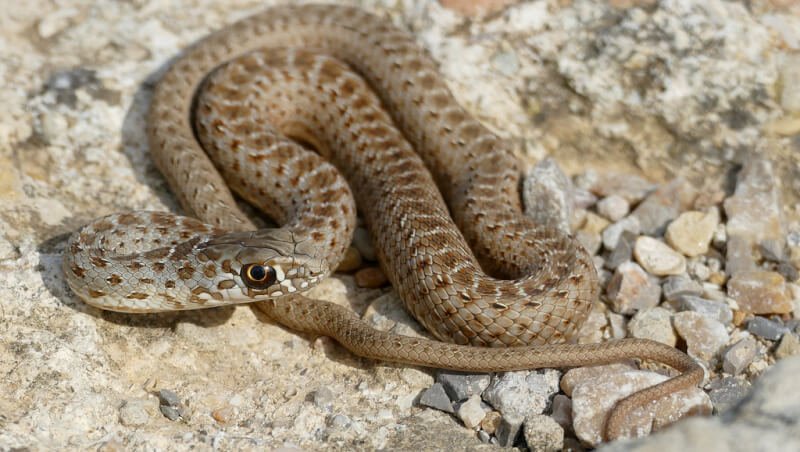Have you ever wondered how to determine the gender of a snake? It may not be as straightforward as you think! In this article, we will explore the fascinating world of snake sexing and uncover the various methods experts use to determine whether a snake is male or female. Whether you’re a curious reptile enthusiast or simply want to impress your friends with your newfound knowledge, get ready to unravel the mystery of snake gender identification.
Introduction
Snakes are fascinating reptiles that come in a wide range of colors, sizes, and species. One question that often arises when owning or studying snakes is how to determine their gender. Unlike mammals, snakes do not have easily distinguishable external genitalia, which makes sexing them a bit more challenging. However, there are several methods that can be used to determine the gender of a snake. In this article, we will explore these methods in detail and provide a comprehensive guide on how to sex a snake effectively.
Snake Reproduction
Before diving into the various sexing methods, it’s important to understand some basics about snake reproduction. Like most reptiles, snakes have sexual reproduction, meaning they require both a male and a female to reproduce. Snakes exhibit sexual dimorphism, which means there are visible differences between males and females.
Sexual Dimorphism
Sexual dimorphism in snakes can manifest in a variety of ways, including differences in size, coloration, and pattern. For example, male snakes of some species may be smaller than females, while others may have more vibrant colors or unique markings. These differences can be helpful in visually identifying the gender of certain snake species. However, relying solely on external characteristics can be challenging, especially for novice snake enthusiasts.
Internal vs External Reproductive Organs
Unlike mammals, snakes have internal reproductive organs. This means that determining their gender requires examining their internal structures. Snake sexing methods are designed to determine the presence of specific reproductive organs, such as hemipenes in males or absence of such organs in females.
Methods for Sexing Snakes
There are several methods that experts and experienced snake owners use to determine the gender of a snake. Each method has its own set of pros and cons, and it may be necessary to combine multiple methods for the most accurate results. Let’s explore some of the most common methods for sexing snakes.
Probing Method
The probing method is a widely used technique for sexing snakes, particularly in young or small-sized individuals. It involves gently inserting a specialized probe into the snake’s cloaca, a common opening for both urination and reproduction.
Popping Method
The popping method is commonly used for sexing larger, non-venomous snakes. It involves applying gentle pressure to the snake’s vent area, causing the hemipenes (in males) or the absence of such structures (in females) to “pop” out.
Tail Length Method
The tail length method is a simple yet reliable technique that can be used to sex certain snake species. In some species, males have longer tails compared to females. By measuring the length of the tail, you can make an educated guess about the snake’s gender.
Ventral Scale Count Method
The ventral scale count method is based on the principle that male and female snakes have a different number of scales on their ventral surface (the underside of their body). By counting the number of scales, one can determine the gender of certain snake species accurately.
Cloacal Characteristics Method
The cloacal characteristics method involves examining the appearance and structure of the snake’s cloaca. In some species, male snakes have a more prominent and elongated hemipenal bulge, while females may have a flatter, less pronounced cloaca. This method requires knowledge and experience to accurately interpret the results.
Probing Method
The probing method is widely used for sexing snakes and is considered one of the more accurate techniques. To perform this method, you will need a specialized probe and some patience.
Tools Required
To perform the probing method, you will need a snake sexing probe. These probes are typically made of stainless steel or plastic and come in various sizes to accommodate different snake species. It’s essential to choose the appropriate probe size to prevent injury to the snake.
Procedure
- Restrain the snake gently but firmly, ensuring your own safety and the safety of the snake.
- Lubricate the probe with a water-based lubricant to facilitate the insertion.
- Gently insert the probe into the snake’s cloaca, being careful not to force it or cause any harm.
- Advance the probe slowly until you reach the end of the cloaca or until you feel a resistance, which indicates the presence of reproductive organs.
Interpreting the Results
If the probe does not encounter any resistance and easily slides further into the cloaca, the snake is likely female. On the other hand, if the probe encounters resistance or cannot be inserted beyond a certain point, it suggests the presence of hemipenes, indicating a male snake.

Popping Method
The popping method is a technique used primarily for larger, non-venomous snake species to determine their gender. It is a gentle, manual approach that requires expertise and experience.
Tools Required
For the popping method, you will need a soft cloth or glove to create a grip on the snake’s tail. It’s crucial to ensure a secure grip to prevent any harm to the snake and maintain your safety.
Procedure
- Gently grasp the snake’s tail just above the vent area with a soft cloth or glove, providing a secure grip.
- Apply gentle, even pressure towards the base of the tail, aiming to push the hemipenes (in males) or detect the absence of such structures (in females).
- Observe for any visible protrusion from the vent area.
Interpreting the Results
If the hemipenes are visible or can be felt beneath the skin, the snake is likely male. Conversely, if no such structures are detectable and the tail remains uniform in shape, the snake is more likely to be female.
Tail Length Method
The tail length method is a straightforward technique that can help determine the gender of some snake species. It relies on the observation of tail length differences between males and females.
Procedure
- Gently extend the snake’s body to a straight position.
- Measure the length of the snake’s tail, starting from the vent area to the tip of the tail.
- Compare the tail length with known average lengths for the species.
- Take note if the tail length falls within the range typically associated with males or females.
Interpreting the Results
In certain snake species, males tend to have longer tails compared to females. If the snake’s tail length falls within the range typically associated with males, it is more likely a male snake. Conversely, if the tail length falls within the range associated with females, the snake is more likely a female.
Ventral Scale Count Method
The ventral scale count method is a reliable technique that requires careful counting and observation of the snake’s ventral scales.
Procedure
- Gently extend the snake’s body to a straight position.
- Count the number of ventral scales present on the snake’s underside, starting from the cloaca and moving towards the head.
- Take note of the overall count and compare it to the average ventral scale count ranges for the species.
Interpreting the Results
Male and female snakes typically have a different number of ventral scales. By comparing the count to average ranges for the species, it is possible to determine the gender of certain snake species accurately.
Cloacal Characteristics Method
The cloacal characteristics method involves observing and analyzing the appearance and structure of the snake’s cloaca. This method requires experience and knowledge to make accurate determinations.
Procedure
- Gently ensure the snake is calm and relaxed to facilitate examination.
- Observe the shape and structure of the cloaca.
- Compare the appearance with known characteristics for males and females of the species.
- Look for any distinctive features, such as a more prominent or elongated hemipenal bulge in males.
Interpreting the Results
Recognizing and interpreting cloacal characteristics correctly is crucial for this method. In some snake species, males may have a more pronounced and elongated hemipenal bulge, while females may have a flatter, less pronounced cloaca. Comparing these characteristics to known standards can help determine the snake’s gender.
Additional Considerations
While the methods described above can be helpful in determining the gender of a snake, there are a few additional considerations to keep in mind for accurate sexing.
Age of the Snake
The age of the snake can influence the reliability of certain sexing methods. For example, young snakes may not have developed reproductive organs fully, making some techniques less effective. It’s important to consider the snake’s age when choosing the appropriate sexing method.
Time of Year
During certain times of the year, such as the breeding season, it may be easier to determine the gender of a snake. Males, for instance, might have more prominent reproductive structures during the breeding season. Taking the time of year into account can provide additional clues for accurate sexing.
Consulting an Expert
If you are unsure about the sexing process or the accuracy of your results, it is always a good idea to consult an expert. Experienced snake breeders, herpetologists, or veterinarians can provide valuable guidance and help ensure accurate determination of a snake’s gender.
Conclusion
Determining the gender of a snake can be a thrilling and challenging task for reptile enthusiasts. By utilizing various sexing methods like probing, popping, tail length measurement, ventral scale counting, and evaluating cloacal characteristics, it is possible to determine a snake’s gender with a reasonable level of accuracy. However, it’s essential to remember that these methods require experience, precision, and knowledge of species-specific traits. If in doubt, always consult with an expert to ensure accurate sexing results. Happy snake sexing!


